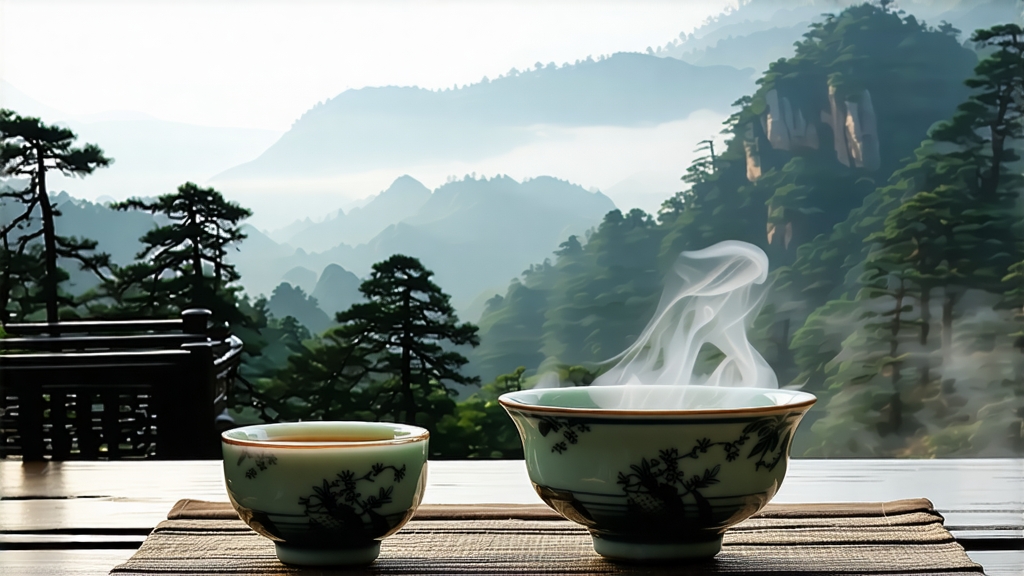
Long before Assam or Ceylon teas filled European cups, a small-leaf black tea from the Wuyi Mountains of Fujian crossed the oceans and rewrote the global palate. That tea is Lapsang Souchong—today celebrated as the oldest documented black tea in history and still the only one whose flavour is born over glowing pine embers. To understand China’s black-tea family, one must begin here, in rocky gorges where mists rise from the Jiuqu (Nine-Bend) River and the air is thick with resinous mountain aroma.
Historical records kept by the local Tongmu village clan temples show that finished “hong cha” (red tea, as the Chinese call it) appeared around 1568, late-Ming dynasty. A passing army had delayed the usual green-tea drying; villagers hurriedly dried the oxidised leaves over pine fires to prevent mould. The dark, fragrant result found eager buyers at the nearby Xingcun market, and by 1604 Dutch traders were shipping it through Batavia to Amsterdam. When Catherine of Braganza introduced tea to the English court in 1662, the chests bore the mark “Bohea Souchong,” a corruption of “Wuyi” and the Amoy-dialect word xiao-zhong (“small cultivar”). Thus Lapsang Souchong became the prototype for every black tea the West would later adore.
Geographically the tea is protected as a National Geographic Indication; only leaf picked within the 565 km² Wuyi reserve may bear the name. The core micro-zone is Tongmu Guan, a narrow pass at 800–1 200 m where daily temperature swings of 10 °C slow leaf growth and concentrate amino acids. Two indigenous cultivars dominate: Cai Cha (purple-leaf) and Xiao Ye Zhong (small-leaf). Their young spring shoots—one bud with two leaves—carry less catechin bitterness than Yunnan or Assam varieties, giving the finished tea a natural malt sweetness that balances the forthcoming smoke.
Plucking begins around Qingming festival when the mountain azaleas bloom. Pickers climb bamboo ladders tied to cliff-side bushes, filling wicker baskets lined with fresh fern fronds to keep the leaf cool. Once back in the wooden-floored Qinglou (withering loft), the leaf is spread 3 cm thick on rattan trays set 2 m above smouldering pine embers. Here the craft diverges from orthodox black-tea protocol: the heat is gentle (28–30 °C) but laced with visible pine smoke. Over the next eight hours the leaf loses 60 % moisture while absorbing volatile phenols—guaiacol and syringol—that will later translate into the tea’s signature pine-resin note.
Rolling follows traditional “double knead” technique: a 45-minute light roll to break cell walls, 20 minutes rest to re-absorb surface moisture, then a second 30-minute roll that tightens the strip without crushing the tip. Oxidation is conducted in cedar-lined boxes kept at 24 °C and 85 % humidity. Because Wuyi spring nights are cool, the leaf rests overnight; by dawn it has turned a uniform copper-maroon. A short 90 °C bake sets the oxidation, after which the tea returns to the pine-smoke loft for its final drying. Here pinewood previously stored for two years is used; younger resin produces acrid smoke, while aged wood yields a softer, incense-like bouquet. The tea is smoked three times, each session separated by 48 hours of rest, allowing moisture to migrate outward so the leaf finishes at 4 % humidity with an unforgettable amber glow in the cup.
Modern connoisseurs encounter two stylistic branches. Traditional Lapsang carries a pronounced yet refined smoke layer reminiscent of lapsang whisky or a cedar cigar box. Craftsmen in Tongmu now also offer an “unsmoked” version called Zheng Shan Xiao Zhong, processed identically but dried with charcoal alone. Stripped of pine, the tea reveals its terroir: cocoa nib, longan fruit, and a cooling mineral aftertaste the locals call yan yun—“rock rhyme.” Both styles share a glossy black leaf interwoven with golden tips, a liquor that shimmers like mahogany, and a lingering honey finish that turns the cup rim into a ring of sweetness.
To brew Lapsang Souchong gongfu style,